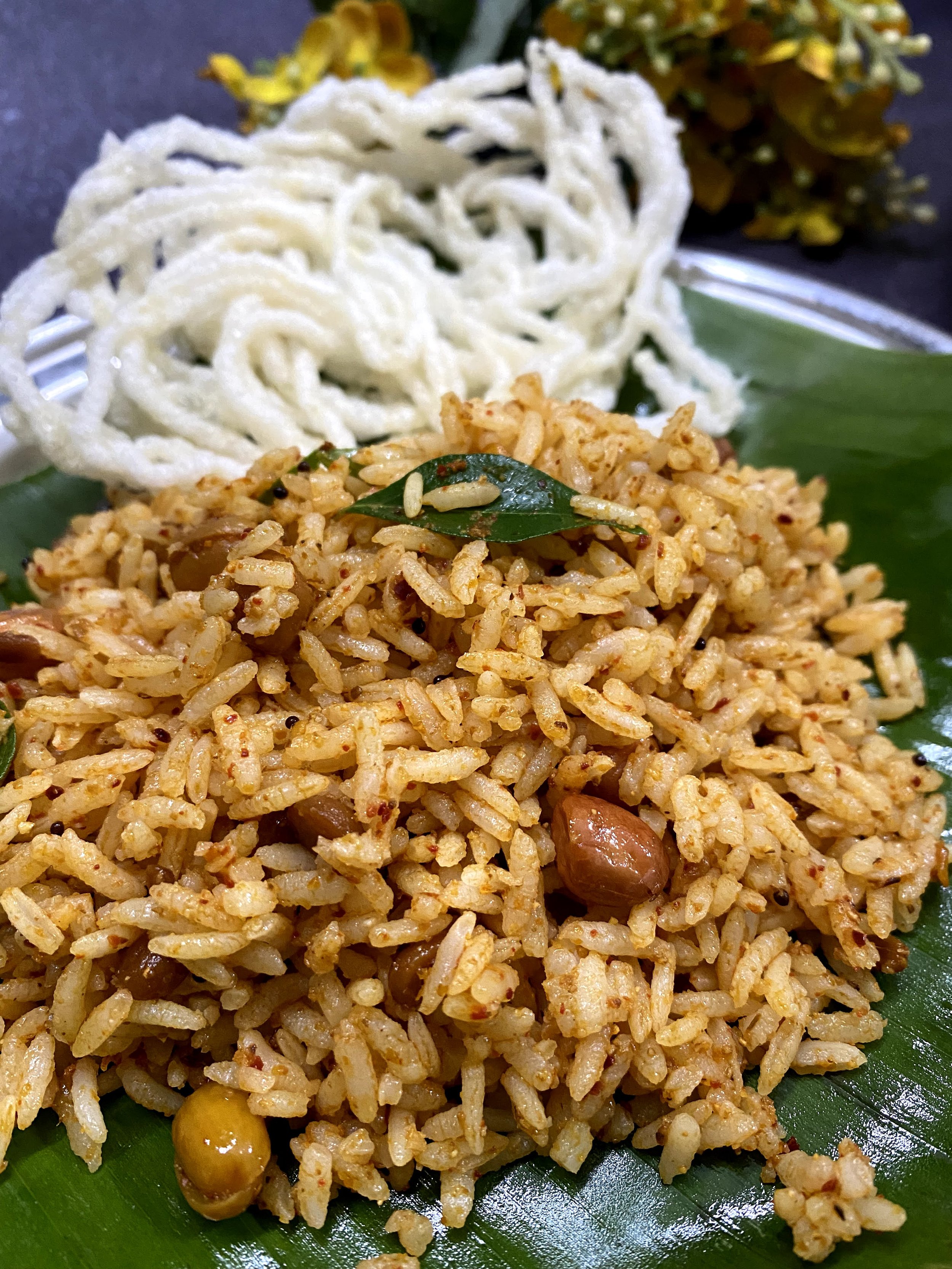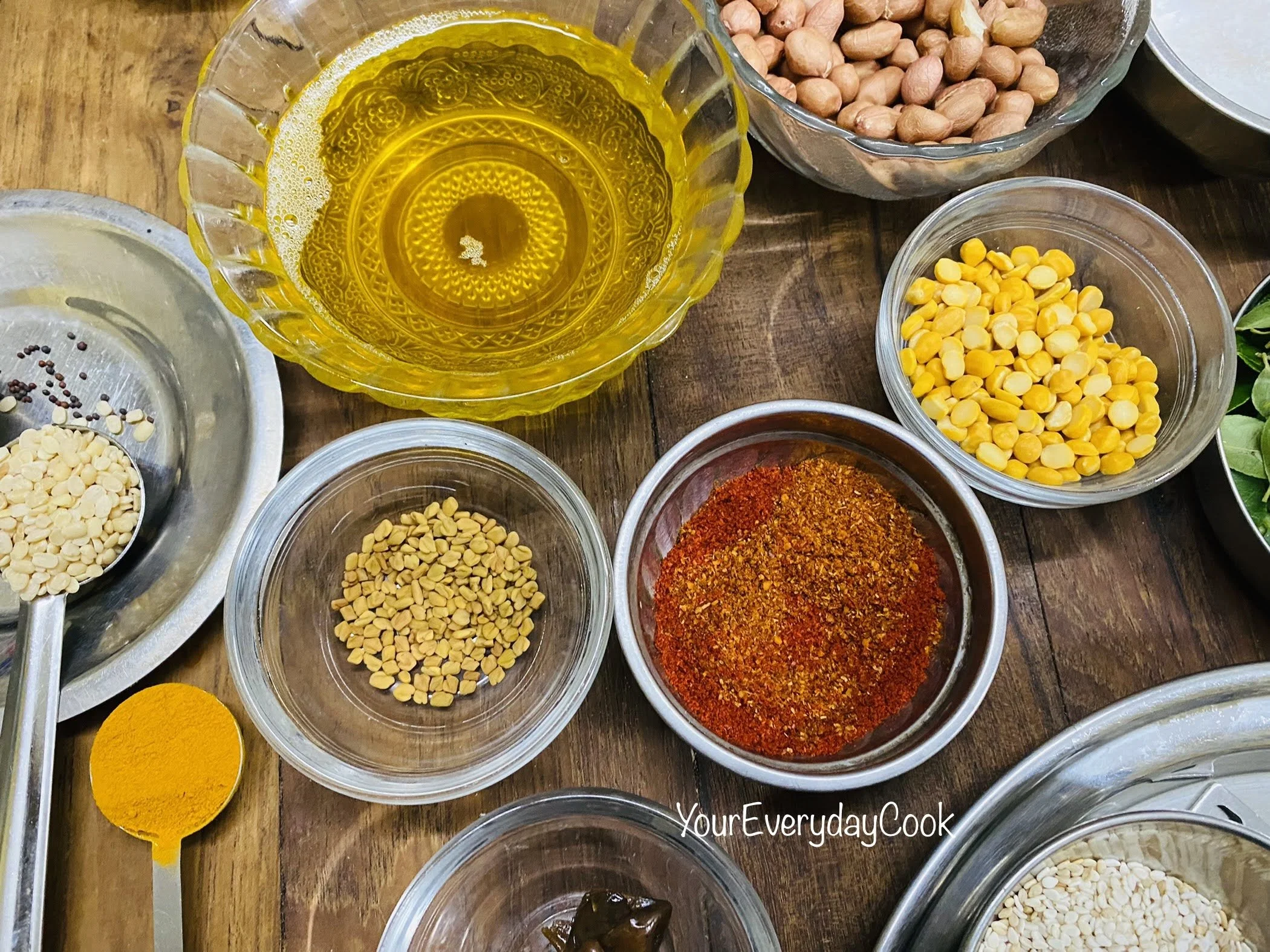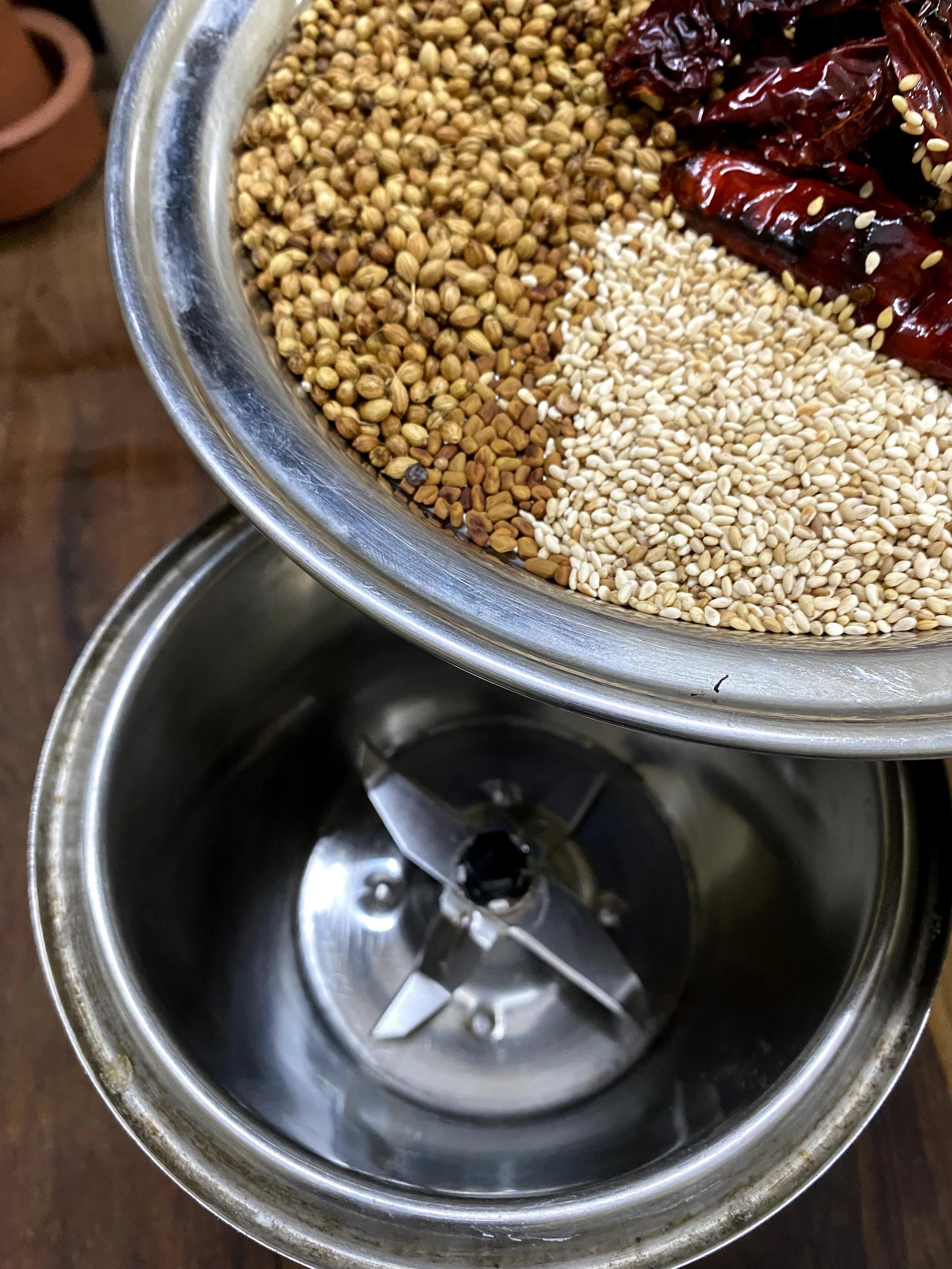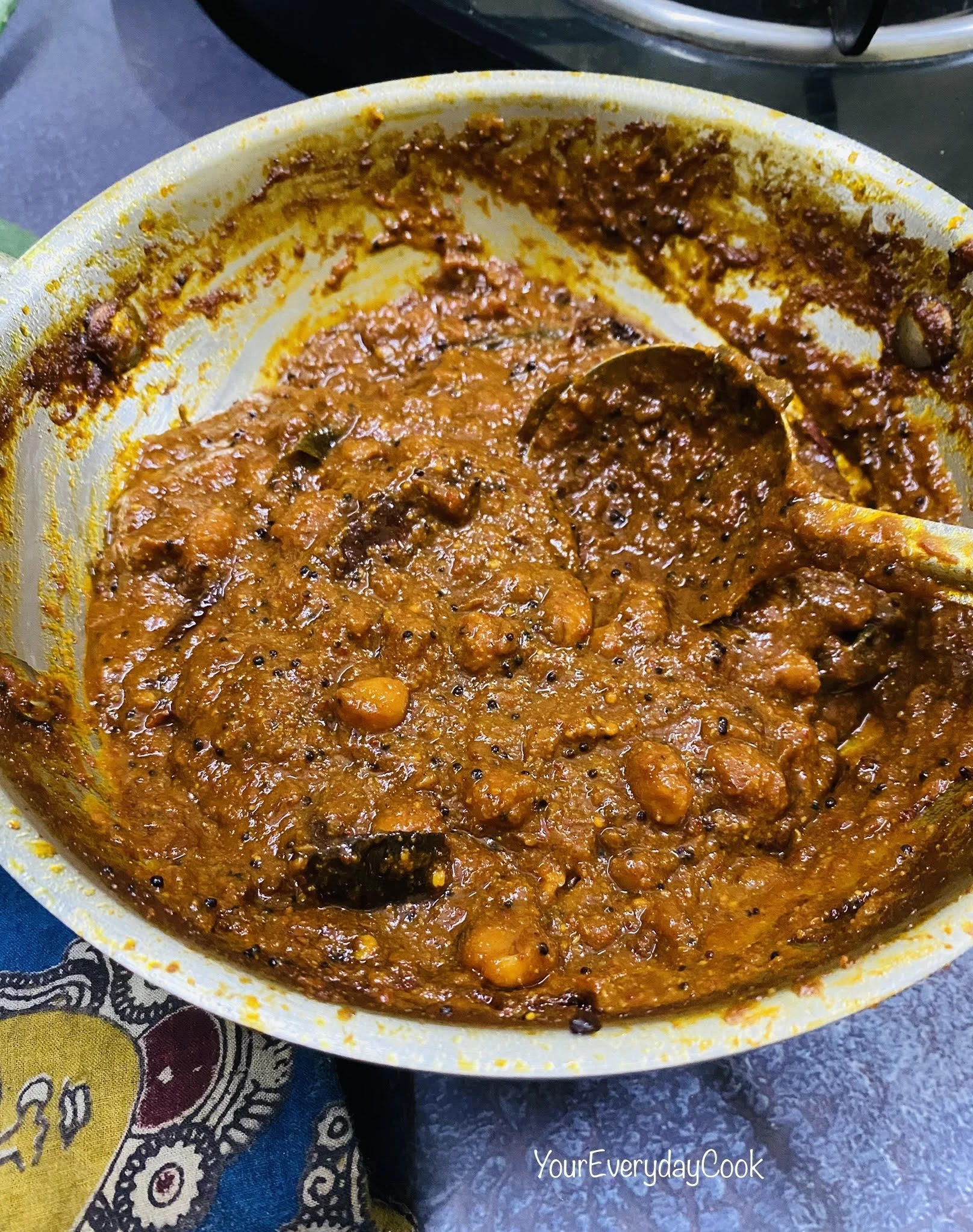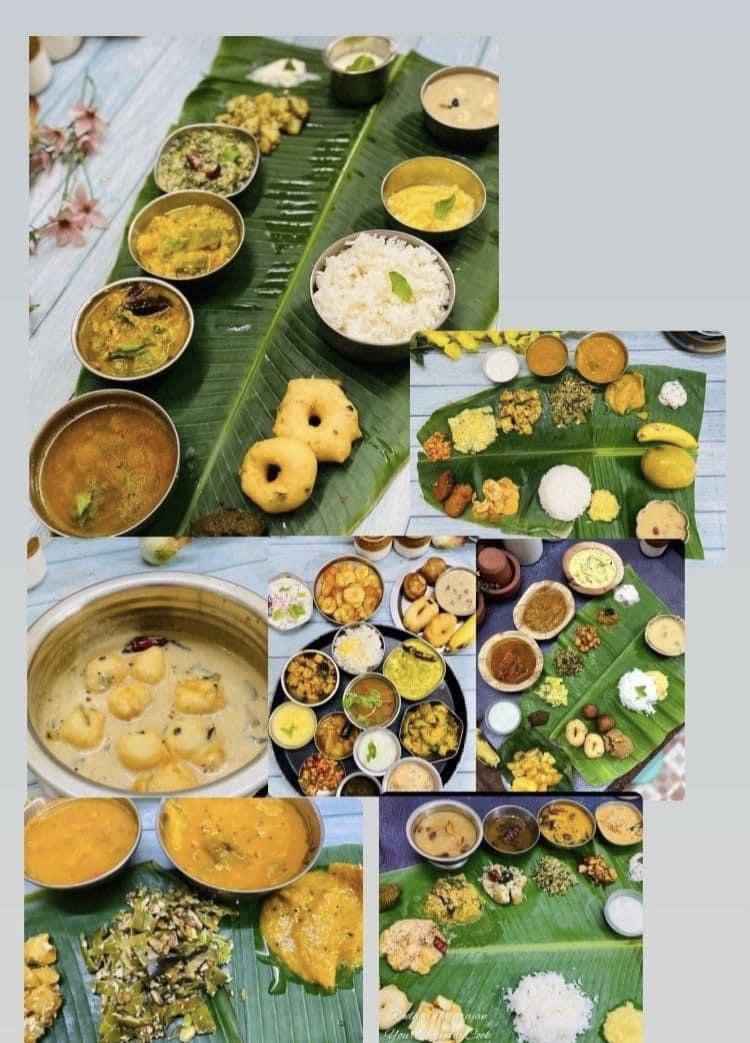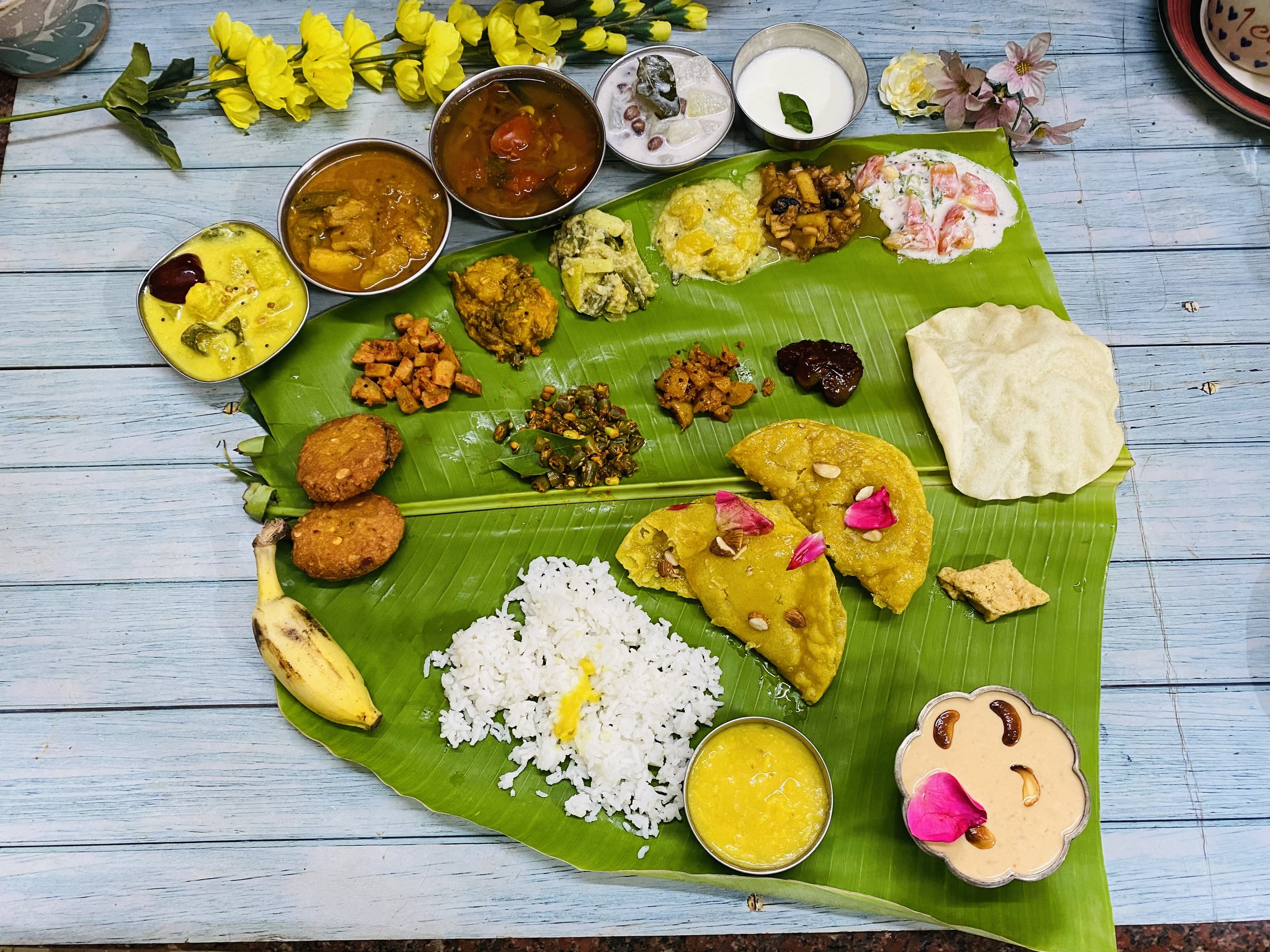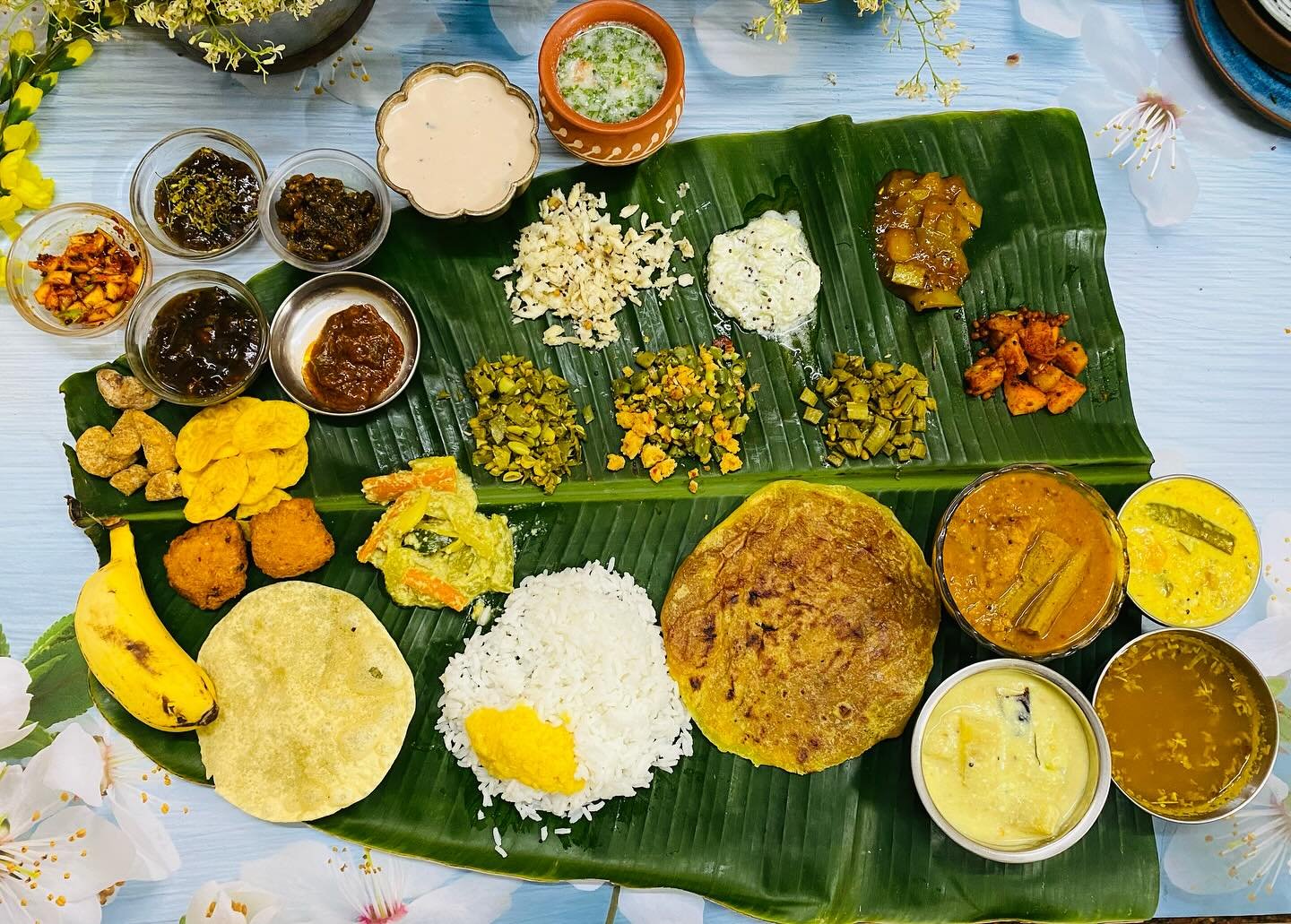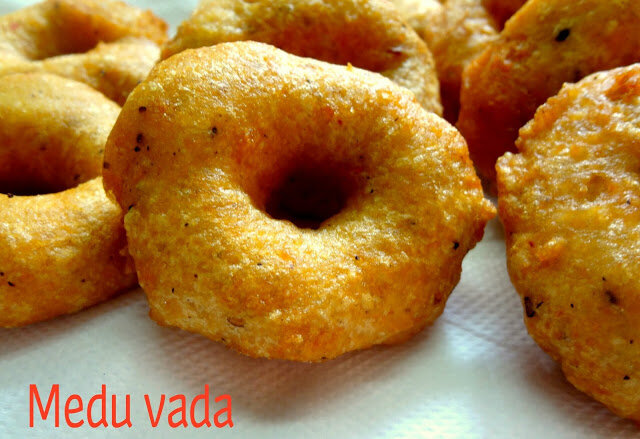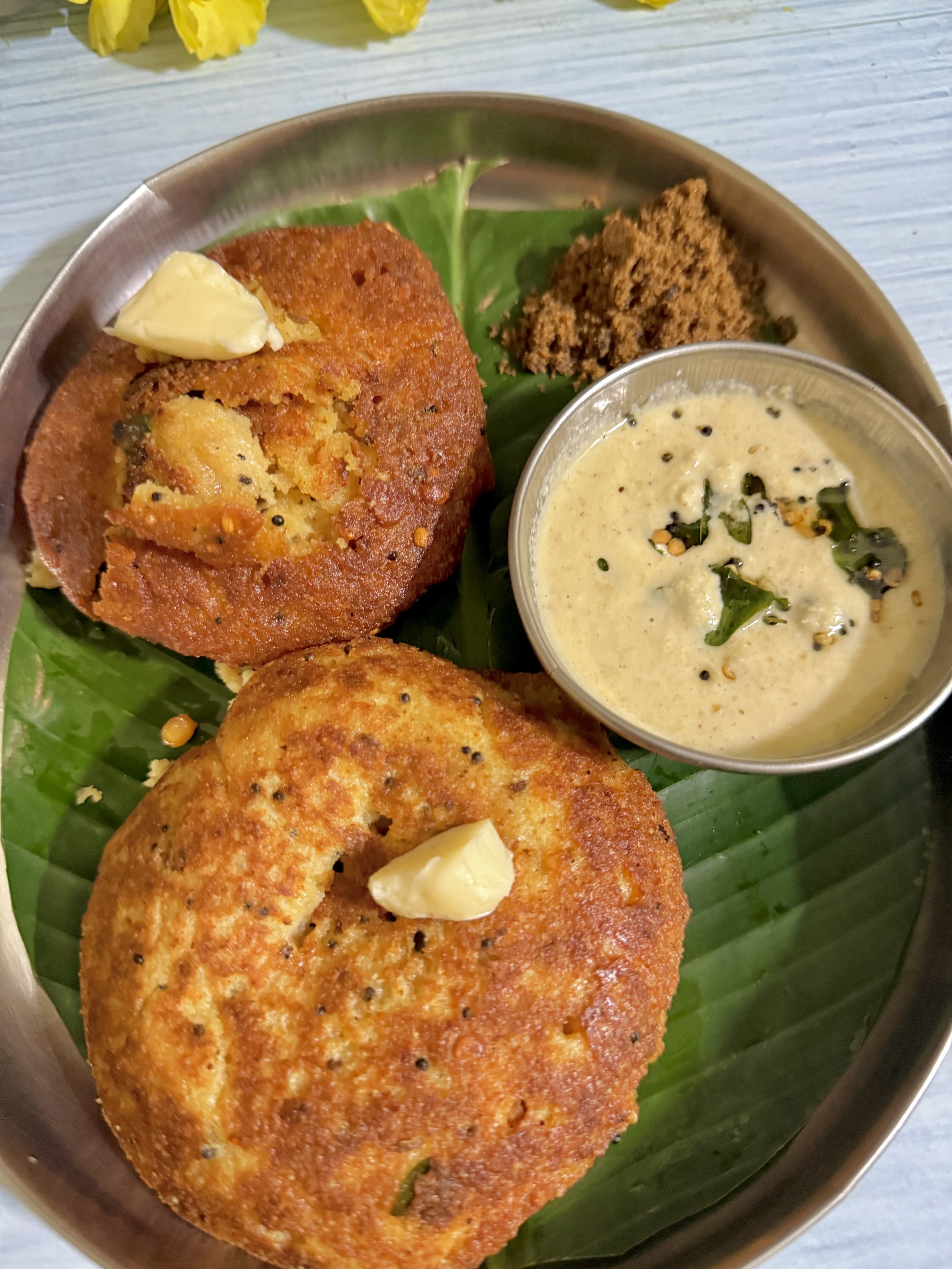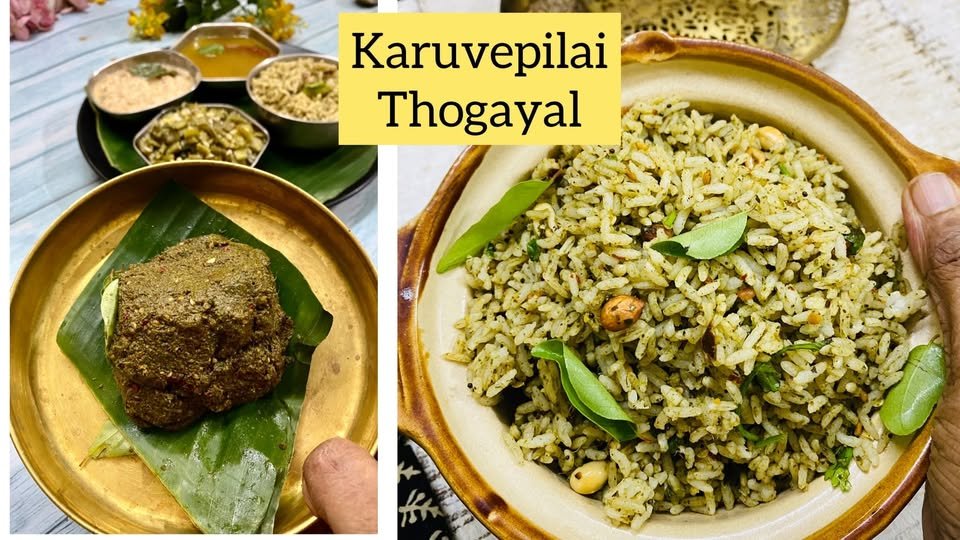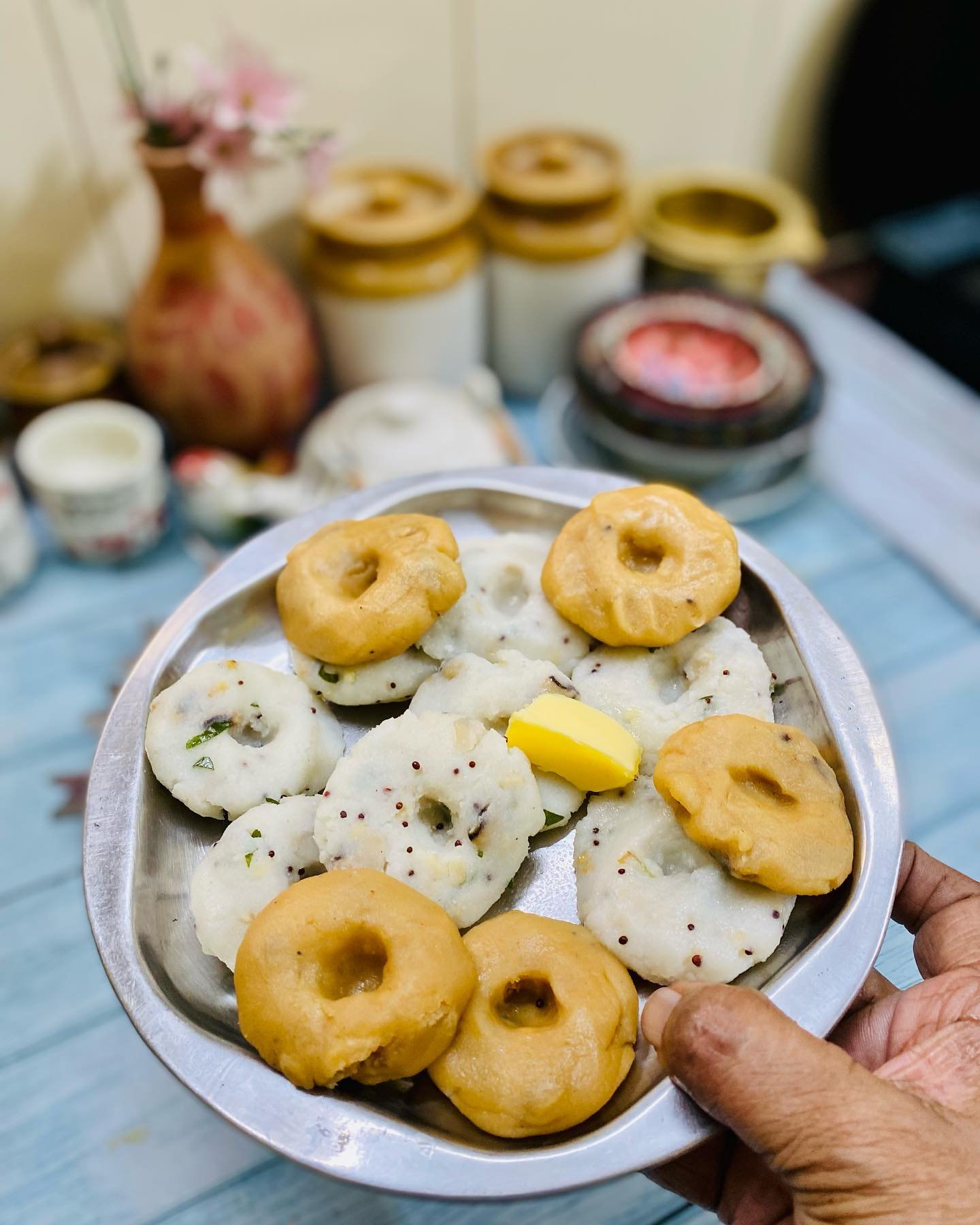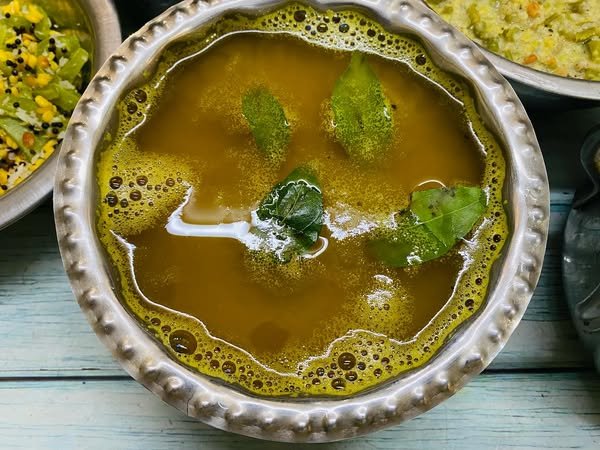Temple style Puliyodharai
Temple Puliyodarai, also known as Kovil Puliyodarai in Tamil, stands out for its simplicity yet inexplicably delicious taste, making one wonder why it's so uniquely satisfying and rightly earns its name.
Served as a key prasadam in many South Indian temples, Kovil Puliyodarai is not just a dish; it's an experience, often being the reason many look forward to visiting temples - to seek divine blessings and enjoy this delightful offering. It's a sought-after prasadam in the major temples across South India, acting as a spiritual and culinary incentive for devotees.
The temple version, often served in a small leaf bowl, is noted for its minimal use of peanuts but remains unmatched in flavor, a taste that seems elusive when attempted at home. Even the most skilled chefs acknowledge a certain longing and admit their inability to perfectly recreate this temple-style Puliyodarai. This led me to believe that its preparation in a sacred environment, infused with religious sanctity, contributes significantly to its distinct taste. It appears simple, yet achieving that authentic flavor is challenging. Temple priests maintain that their preparation follows a recipe passed down through generations.
After numerous attempts and finally gaining my family's approval, I'm sharing here a humble effort to replicate that nearly sacred taste. Like the enigmatic temple Sakkarai Pongal, making Temple Puliyodarai has been a truly humbling journey.
Spicy tangy Tamarind rice is a classic dish known for its robust flavors, often made and offered as neivediyam or featured as a special dish in lunch menus, particularly during festival times such as Aadi 18/Padinettam Perukku, and as part of the rice variety served on Kanu Pongal day, accompanying coconut rice, lemon rice, and curd rice. It's also a staple in many festive lunch spreads, paired with other rice dishes. Transitioning effortlessly from a simple everyday meal to a tantalizing addition to festive menus, and even as a favored lunchbox option, Tamarind rice, or Puliyodharai, remains an all-time favorite.
Ingredients
Cook sufficient rice as per your requirement in pressure cooker with just enough water to give fluffy rice .
Allow to cool on a plate .
For tempering
1 tbsp mustard seeds
1 tsp split udad dal ( optional ) some people skip this dal .
3 tbsp chana dal
1 tsp methi seeds
1 tsp asafoetida solid or powder ( solid preferred )
sprigs of curry leaves
handful peanuts
1/2 tsp turmeric powder
rock salt preferred .
10 red chillies broken or as preferred
125 ml sesame oil recommended for longer shelflife and taste . No other oil will do ! please use sesame oil also called gingelly oil .
Other ingredients
100 grams tamrind soaked in hot water and maximum juice extracted approx about 5 cups of juice .
For tastemaker powder ( mel podi ) that is added during the cooking and as a topping later .
4 tbsp coriander seeds
1/2 tsp methi seeds
1 tbsp black or white sesame seeds .
10 red chillies of both spicy and medium spice varieties. use
Byadagi chilies for colour . reduce if you prefer a less spicy podi .
Taste maker for puliyodharai/also called as mel podi .coriander seeds, methi seeds, sesame seeds, red chiliies .
Method
Soak the tamarind in 2 1/2 cups of water and extract the juice and keep it aside
Heat oil in a pan, roast items given in to be ground except sesame seeds and fry till golden . Keep aside.Next add sesame seeds and fry for few seconds till aromatic and popping, remove all the fried ingredient. Allow to cool .
When cooled well, grind to powder .
Heat sesame oil in a pan, add asafoetida , add mustard seeds when the oil is hot. When the mustard seeds starts to crackle, add channa dal , split udad dal ,and peanuts/ cashewnuts, and fry to golden.
Then add red chillies broken, and curry leaves.Roast for few seconds.
Then add extracted thick tamarind pulp, add turmeric powder , salt.
Let the tamarind mixture to boil till raw smell disappears. around 6 minutes or 10 and thicken a bit.
Then add some of the the ground powder and mix well to remove lumps after adding the ground spice powder. Keep some aside for mixing with rice .
Let the flame be kept in medium and allow the extract mixture to boil well till a paste like consistency is formed.
When thickened,remove, cool store well. Stays good upto a month. Mix with cooled fluffed rice to make a delcious puliyodharai in South Indian style.
Generous addition of sesame oil will ensure the delicious paste will remain good for longer period . Sesame oil is recommended for the authentic taste:-)
Pulikaachal
Watch the making of this puliyodharai from my youtube channel



